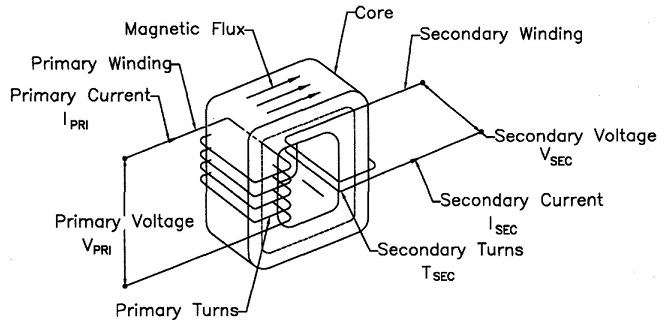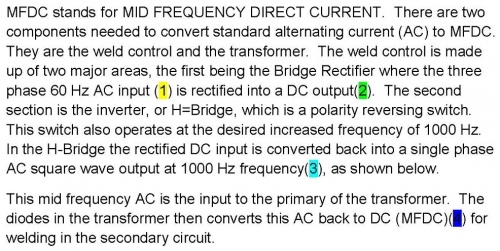
Controls & Transformers
Questions and Answers
Resistance welding transformers can have very high demand for a very short period of time. Installation of correctly sized primary conductors is imperative for the machine to run properly. The proper procedure to size these conductors for AC equipment is:

When the duty cycle of the machine is known
1. Calculate the duty cycle
2. Determine the weld current
3. Divide the weld current by the turns ratio of the weld transformer. This is the Primary Demand Current.
4. Multiply the Primary Demand Current by the square root of the duty cycle. This is the Primary Effective Continuous Thermal Current (ECTC).
5. Refer to the Ampacity Chart of the cable type to be used. Select the size based on the Primary Effective Continuous Thermal Current (ECTC).
If the Duty Cycle or Weld Current is not known or this is a general purpose machine:
1. Divide the transformer nameplate KVA by the primary voltage.
2. Multiply that result by the square root of 0.5 (RWMA transformers normally are rated at 50% Duty Cycle)
3. The result is the Primary Effective Continuous Thermal Current (ECTC).
4. Refer to the Ampacity Chart of the cable type to be used. Select the size based on the Primary Effective Continuous Thermal Current (ECTC).
Ampacity charts are based on the National Electric Code (NEC). There may be other state, local or company standards that must be followed.
Reference: National Electric Code
RWMA Manual Chapter -21.7
Roman Manufacturing Inc.
In many facilities it is beneficial to insure that the multiple welders in a station not fire at the same time to prevent a sudden large draw on the plant power supply. To spread this out cascade controls can be employed where one control will sequence through several contactors in sequence. The sequence and separation between the welds can be controlled to give an appropriate modest draw on the power supply.
In North America the power grid is 60 hertz. All schedules and operations are based upon that power. In other parts of the world power is generated at other power levels. Many use 50 hertz. If one has a good weld schedule in a 60 hertz area and a new operation were set up in a 50 hertz region a conversion would be needed for weld time. The formula is:
Weld Time @60 Hz X (50/60) = Weld Time @ 50 Hz
OR
Weld Time @50 Hz X (60/50) = Weld Time @60 Hz
Pressure, current and time (PCT) are the basic functions performed by the resistance welder. These functions are controlled or initiated by the weld controller. It initiates each step when told to start the weld process by input from the foot switch or automation PLC. The controller allows time for each step to operate and controls the current amplitude. In simplified form this is Squeeze, Weld and Hold. The squeeze sequence allows the pressure system to build up the force to contain the weld. The weld function is the actual current flow and is totally controlled by the weld controller. It regulates the amplitude and time of current flow. Hold is the period which allows the weld nugget to cool down and solidify under force. The controller regulates this time.
Page 21 of 39
Have a Question?
Do you have a question that is not covered in our knowledgebase? Do you have questions regarding the above article? Click here to ask the professor.

